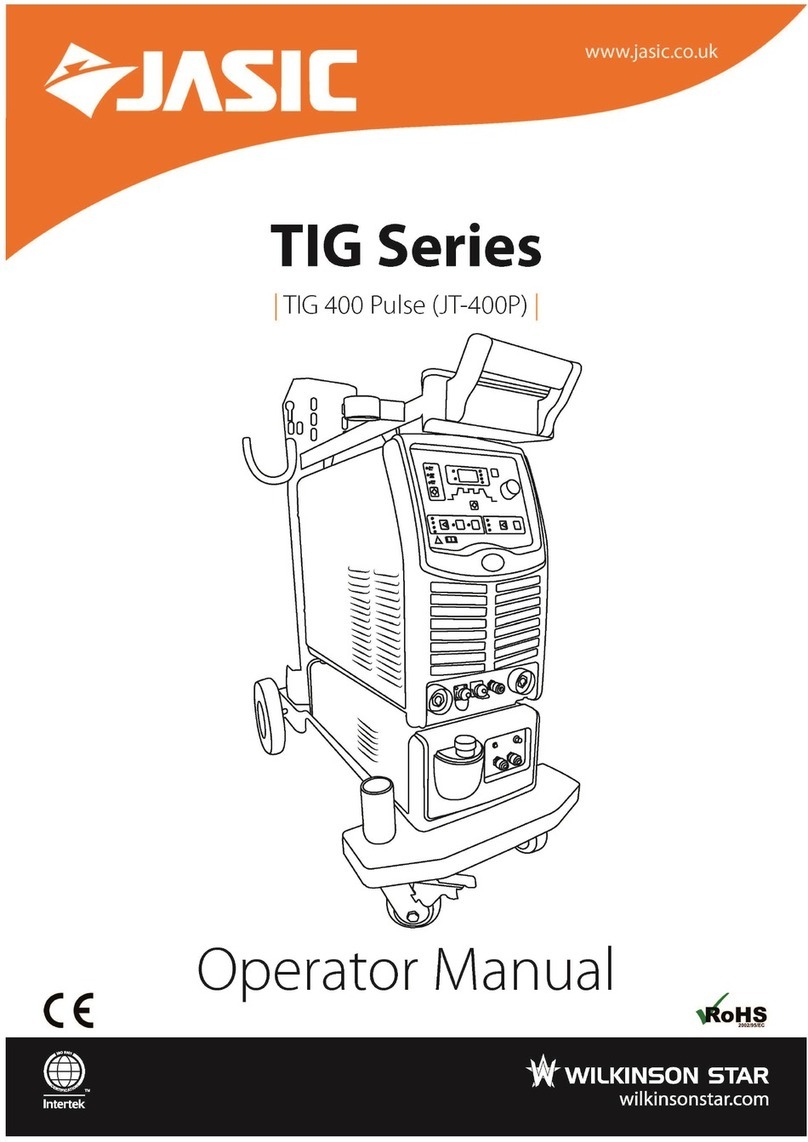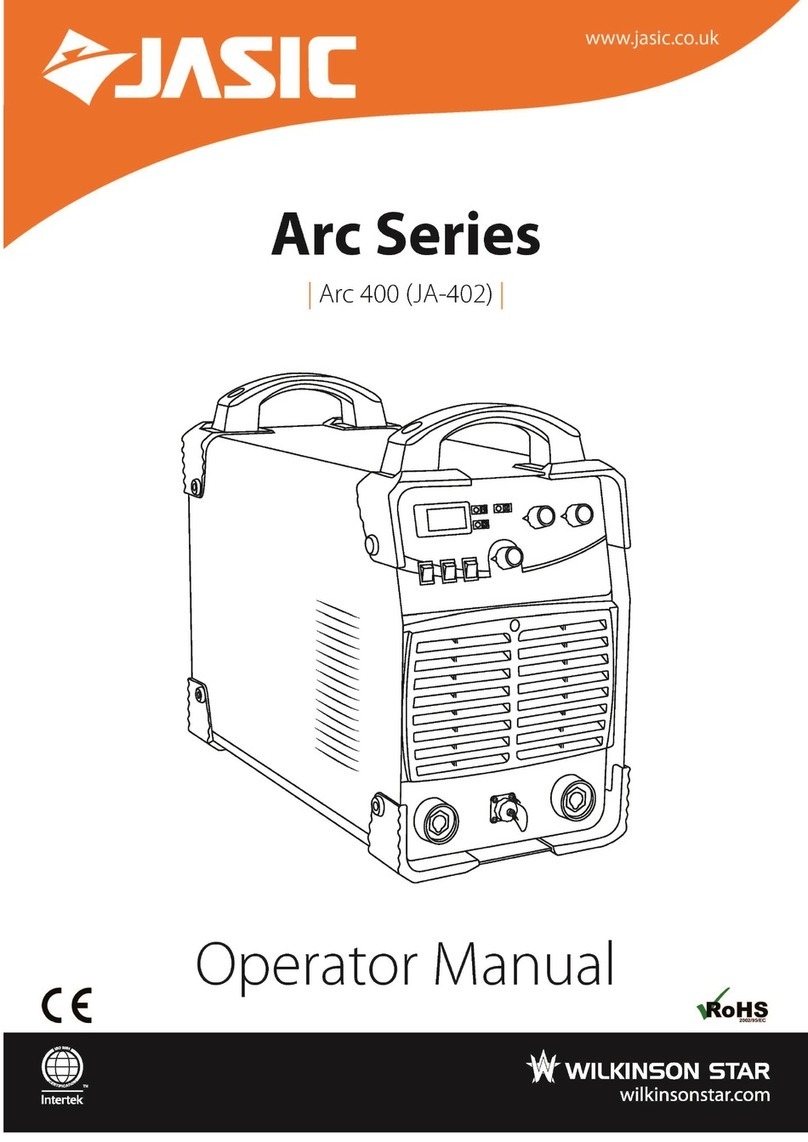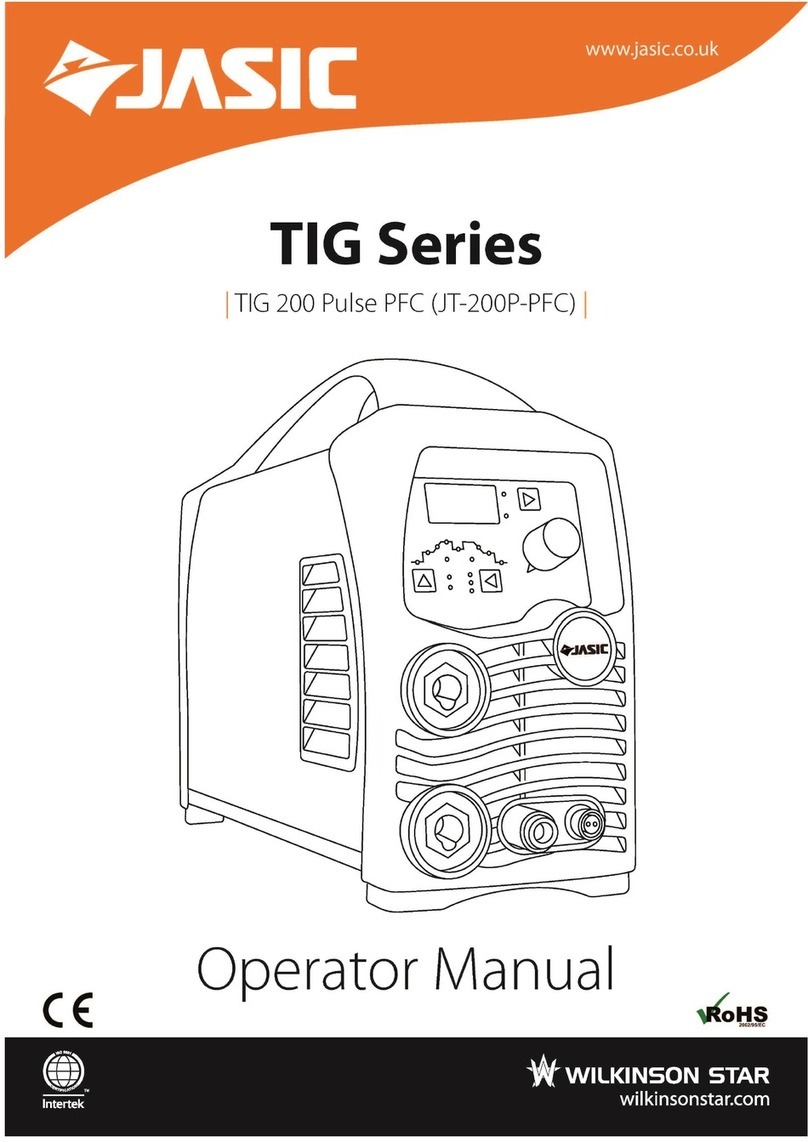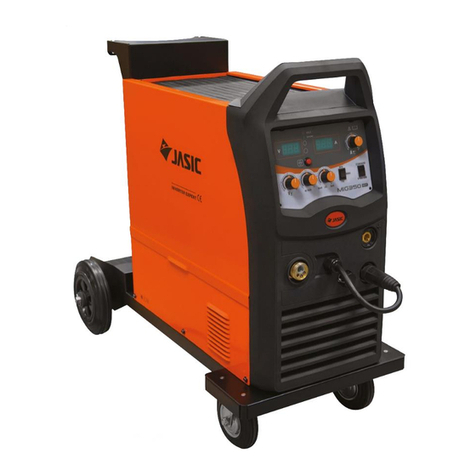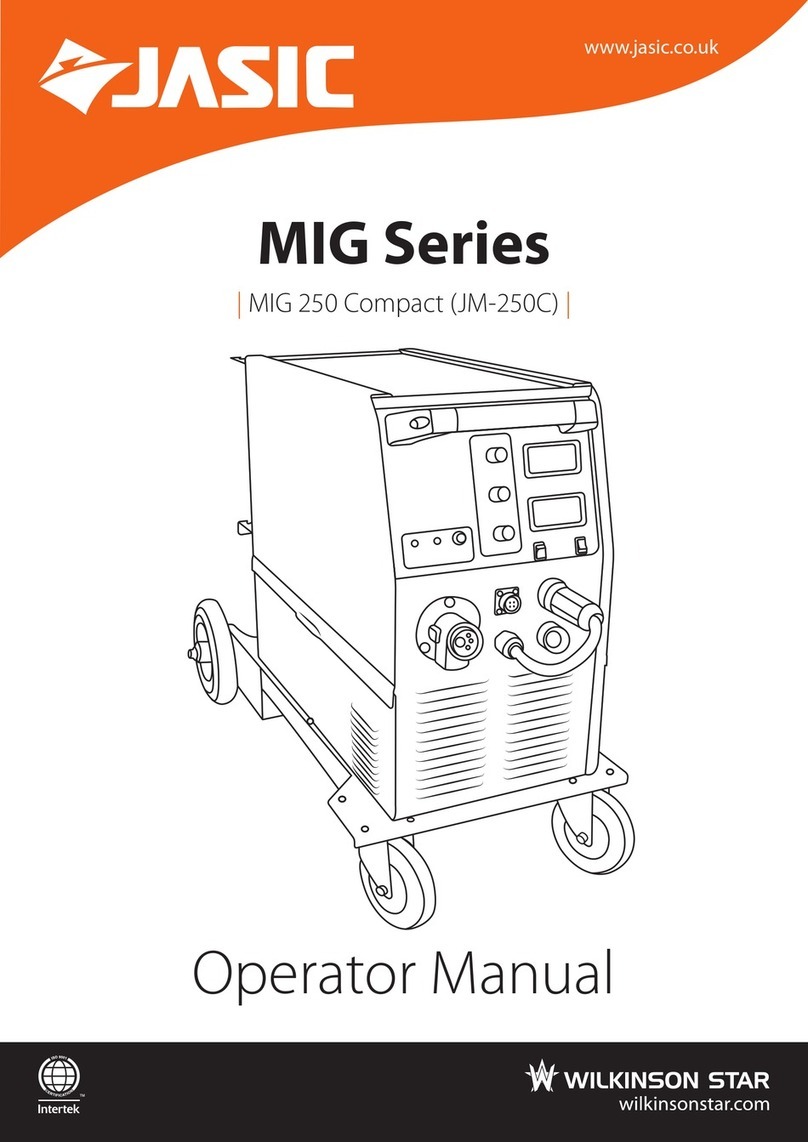
4
SAFETY
These general safety norms cover both arc welding machines and plasma cung machines unless
otherwise noted.
The equipment must only be used for the purpose it was designed for. Using it in any other way could
result in damage or injury and in breach of the safety rules.
Only suitably trained and competent persons should use the equipment. Operators should respect the
safety of other persons.
Prevenon against electric shock
The equipment should be installed by a qualied person and in accordance with current standards in
operaon. It is the users responsibility to ensure that the equipment is connected to a suitable power
supply. Consult with your ulity supplier if required.
If earth grounding of the work piece is required, ground it directly with a separate cable.
Do not use the equipment with the covers removed.
Do not touch live electrical parts or parts which are electrically charged.
Turn o all equipment when not in use.
Cables (both primary supply and welding) should be regularly checked for damage and overheang.
Do not use worn, damaged, under sized or poorly jointed cables.
Ensure that you wear the correct protecve clothing, gloves, head and eye protecon.
Insulate yourself from work and ground using dry insulang mats or covers big enough to prevent any
physical contact with the work ground.
Never touch the electrode if you are in contact with the work ground or another electrode from a
dierent machine.
Do not wrap cables over your body.
Ensure that you take addional safety precauons when you are welding in electrically hazardous
condions such as damp environments, wearing wet clothing and metal structures.
Try to avoid welding in cramped or restricted posions.
Ensure that the equipment is well maintained. Repair or replace damaged or defecve parts immediately.
Carry out any regular maintenance in accordance with the manufacturer’s instrucons.
Safety against fumes and welding gases
Locate the equipment in a well-venlated posion.
Keep your head out of the fumes. Do not breathe the fumes.
Ensure the welding zone is in a well-venlated area. If this is not possible, provision should be made for
suitable fume extracon.
If venlaon is poor, wear an approved respirator.
Read and understand the Material Safety Data Sheets (MSDS’s) and the manufacturer’s instrucons for
metals, consumable, coangs, cleaners and de-greasers.
Do not weld in locaons near any de-greasing, cleaning or spraying operaons. Be aware that heat and
rays of the arc can react with vapours to form highly toxic and irritang gases.
Do not weld on coated metals unless the coang is removed from the weld area, the area is well
venlated and while wearing an air-supplied respirator. The coangs on many metals can give o toxic
fumes if welded.
Prevenon against burns and radiaon
Arc rays from the welding process produce intense, visible and invisible (ultraviolet and infrared) rays that
can burn eyes and skin.
Wear an approved welding helmet ed with a proper shade of lter lens to protect your face and eyes
when welding or watching.






